 It is unfortunate for Matt Waldron (Irr.App.[Ext.]) that his reworking of the Angry Eelectric Finger raw material was alotted Volume Three status, as he has used many of the same sounds as Jim O'Rourke used in his Volume One. Although both albums are excellent listens, perhaps owing to the strength of the source material, both artists have done little alteration and their volumes sound a bit too similar at times.
It is unfortunate for Matt Waldron (Irr.App.[Ext.]) that his reworking of the Angry Eelectric Finger raw material was alotted Volume Three status, as he has used many of the same sounds as Jim O'Rourke used in his Volume One. Although both albums are excellent listens, perhaps owing to the strength of the source material, both artists have done little alteration and their volumes sound a bit too similar at times.
In July of 1983 the emaciated corpse of Cole Berlin, a world-weary lounge singer and occasional prostitute was discovered in his Chelsea Hotel apartment, an early victim of AIDS-related illness. He was 37 years old, and his passing from this world went largely unwept and unsung. None of his neighbors could have guessed that a decade earlier, Cole Berlin had been Jobriath, an internationally hyped glam diva and the world's first openly gay rock star.
Jobriath Salisbury was born Bruce Wayne Campbell, a classically trained piano prodigy from an early age, who joined a hippie rock ensemble called Pidgeon. There he was discovered by Jerry Brandt, who had previously signed such talented luminaries as Patti Smith, and, er, Barry Manilow. Brandt saw in Jobriath the opportunity to create a stateside equivalent of David Bowie, and wasted no time signing the youth to Elektra and recording a pair of albums that showcased Jobriath's songwriting skills and piano virtuosity, as well as his Broadway-style vocal flamboyance, complete with thinly veiled lyrical references to homosexual love, male prostitution and sadomasochism. Jobriath's songs were wrapped in cataclysmically huge arrangements including overwrought orchestral interludes and a bevy of female backup singers. Monumental space oddities like "Morning Star Ship" rubbed shoulders with emotive piano ballads like "Inside" and utterly bizarre, campy Jack Smith nightmares like "What A Pretty."
Load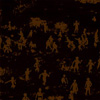 Sightings are keeping music dangerous. At a recent local liveappearance guitarist Mark Morgan was not ready to hit the stage untilhe was almost unable to walk through the crowd without falling over. Arrived in Goldis the sound of a band unafraid to shred the rock 'n' roll rulebooklike so much cheese going through a grater. They are capable of beingeither a devastatingly intense noise outfit or a kick-ass rock 'n' rollband, but their strength is in combining the two approaches. Althoughtrack three, "Odds On," hints at a linear structure, not until thefourth track does anything resembling a "song" appear. Because thefirst three tracks are so abstract and fragmented, "Internal Compass"sounds all the more powerful with its chugging guitar and drumspattern. It's like a train is on an express through the eardrum canals,not stopping for pedestrians. On "Sugar Sediment," the rhythm sectionis locked into a steady, rolling groove, yet the guitar sounds morelike a chainsaw than a melody making instrument. This tension is whatkeeps the music so exciting. Rather than merely relying on trendyelectronics for strange sounds, Sightings achieve a much tougher goalby producing foreign sounds on familiar instruments. They often lockinto live patterns that sound looped, such as on "Switching toJudgement." As a whole, Arrived in Gold has just the rightproduction quality, sounding raw and spontaneous without soundingamateurish. The full spectrum of frequencies is certainly representedduring "One Out Of Ten," in which throbbing bass and screechinghigh-end guitar are simultaneously competing to deafen. All of theinstruments are clearly audible at all times, yet the set maintains apleasant grittiness throughout. Ten minute album closer "Arrived InGold, Arrived In Smoke" is a perfect distillation of all of theseelements. During the first five minutes Sightings gradually buildlayers of grinding, repetitive patterns until they arrive at all-outfeedback mayhem. The remaining five minutes of sparse pitter-patterelectronics and rumbling guitar feedback are a necessary come-down fromthe intensity of the album's preceding 33 minutes.
Sightings are keeping music dangerous. At a recent local liveappearance guitarist Mark Morgan was not ready to hit the stage untilhe was almost unable to walk through the crowd without falling over. Arrived in Goldis the sound of a band unafraid to shred the rock 'n' roll rulebooklike so much cheese going through a grater. They are capable of beingeither a devastatingly intense noise outfit or a kick-ass rock 'n' rollband, but their strength is in combining the two approaches. Althoughtrack three, "Odds On," hints at a linear structure, not until thefourth track does anything resembling a "song" appear. Because thefirst three tracks are so abstract and fragmented, "Internal Compass"sounds all the more powerful with its chugging guitar and drumspattern. It's like a train is on an express through the eardrum canals,not stopping for pedestrians. On "Sugar Sediment," the rhythm sectionis locked into a steady, rolling groove, yet the guitar sounds morelike a chainsaw than a melody making instrument. This tension is whatkeeps the music so exciting. Rather than merely relying on trendyelectronics for strange sounds, Sightings achieve a much tougher goalby producing foreign sounds on familiar instruments. They often lockinto live patterns that sound looped, such as on "Switching toJudgement." As a whole, Arrived in Gold has just the rightproduction quality, sounding raw and spontaneous without soundingamateurish. The full spectrum of frequencies is certainly representedduring "One Out Of Ten," in which throbbing bass and screechinghigh-end guitar are simultaneously competing to deafen. All of theinstruments are clearly audible at all times, yet the set maintains apleasant grittiness throughout. Ten minute album closer "Arrived InGold, Arrived In Smoke" is a perfect distillation of all of theseelements. During the first five minutes Sightings gradually buildlayers of grinding, repetitive patterns until they arrive at all-outfeedback mayhem. The remaining five minutes of sparse pitter-patterelectronics and rumbling guitar feedback are a necessary come-down fromthe intensity of the album's preceding 33 minutes.
samples:
Stones Throw Records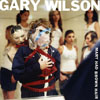 In the years since his near-miraculous rediscovery in 2002, the author of 1977's cry for help You Think You Really Know Mehas taken time off from his busy porn bookstore clerking duties torecord a second collection of fear and loathing ridden love songs. Forthe uninitiated, Gary Wilson is Endicott, NY's ("A very, VERY smalltown," as if that is ever an excuse) favorite poster boy for neurosis.A legitimate musical phenomenon in his youth, he was proficient withmultiple instruments at the age of eight and collaborated with avantgarde composer John Cage before the age of 16. But by the time GaryWilson and the Blind Dates joined the burgeoning new-wave/punk scene inNYC, something happened: no one knew what to make of Wilson or hismusic. Appearing on stage wrapped in cling film and occasionallyaccompanied by mannequins, the Blind Dates would tear through theirbizarre setlist stopping only to cover Gary in flour and milk,dismember their mannequins, or to destroy their equipment. Frustratedby New York's head-scratching response, Wilson retreated to hisparents' basement with a four track recorder and no small amount ofrepressed sexual energy to record You Think You Really Know Me, a stinging rebuke to any who professed that they did. The album'smere survival is a story in itself. By his own admission, most of the600 copies pressed were smashed over Wilson's forehead at shows. Soonafter the album's release, Wilson packed up and left small townEndicott and literally vanished, dropping off the scene entirely.Thanks to near-constant exposure on underground radio and a fewcelebrity endorsements, his legend lived on until he was uncovered inSan Diego at the turn of the milennium, playing in a house band at anItalian restaraunt and sitting behind the bulletproof glass at anallnight adult bookstore. After playing sold out shows in LA and NewYork and even releasing a film documentary, Wilson finally releases Mary Had Brown Hair,the follow-up to his cellar opus. Gone are his testosterone-fueledbellows, his uniquely organic synthesized grooves and any vestiges ofthe delightful soul/punk/funk blend that could get anyone up and movingand singing along to lyrics that are at times near-psychotic. Now mostof the 14 original tracks on Mary Had Brown Hair (the album also includes two pre-You Think You Really Know Mecuts, "original" versions of "Chromium Bitch" and a less freaky, morepsychedelic cut of the trademark "6.4 = Make Out") are backed by aCasio keyboard, playful but not particularly challenging orinteresting. Worse yet a simple drum track keeps the time for most ofthe album's 30 minutes, a marked departure from his earlier technique(though it might not have been worthy of John Bonham, Wilson wouldstill do his own drumming). Wilson's disco-era voice, scary andmesmerizing, has devolved into a warbly whine, showing the effect theyears have had on Wilson both physically and mentally. In some tracks,it is sped-up to provide a sort of duet. (Gary conversing with hisinner demons?) The bravado on You Think You Really Know Me isnow but a vague memory, perhaps just a defensive front all along. Onecould hardly imagine the swaggering Wilson of 1977 lamenting "GaryWilson feels so bad/Gary Wilson feels real sad for you/Cause you're allalone." It appears that when Wilson packed up and left Endicott, he wastrying to leave something behind, and failed miserably. Hisdemons—whatever they were, lost loves, departed lovers, the kiss neverdelivered, a cute girl he saw on the bus—have followed him, and theirheads are reared for the world to see on Mary Had Brown Hair .Now Wilson, 18 years old, balding, his voice receding, is "all alone towalk the streets of Endicott all by myself." Whatever his personalfailings may be, they are immaterial to the listener, as Wilson'steeming musical genius shines vibrantly throughout all of Mary Had Brown Hair.The hooks are infectious, the choruses are the weirdest lines you willever find yourself singing along to, and Wilson is still a skilled handat guitar and keys. 27 years later, I am forced to admit that Wilsondoes indeed "still got it," though what "it" is remains an enigma: justthe way Gary likes it.
In the years since his near-miraculous rediscovery in 2002, the author of 1977's cry for help You Think You Really Know Mehas taken time off from his busy porn bookstore clerking duties torecord a second collection of fear and loathing ridden love songs. Forthe uninitiated, Gary Wilson is Endicott, NY's ("A very, VERY smalltown," as if that is ever an excuse) favorite poster boy for neurosis.A legitimate musical phenomenon in his youth, he was proficient withmultiple instruments at the age of eight and collaborated with avantgarde composer John Cage before the age of 16. But by the time GaryWilson and the Blind Dates joined the burgeoning new-wave/punk scene inNYC, something happened: no one knew what to make of Wilson or hismusic. Appearing on stage wrapped in cling film and occasionallyaccompanied by mannequins, the Blind Dates would tear through theirbizarre setlist stopping only to cover Gary in flour and milk,dismember their mannequins, or to destroy their equipment. Frustratedby New York's head-scratching response, Wilson retreated to hisparents' basement with a four track recorder and no small amount ofrepressed sexual energy to record You Think You Really Know Me, a stinging rebuke to any who professed that they did. The album'smere survival is a story in itself. By his own admission, most of the600 copies pressed were smashed over Wilson's forehead at shows. Soonafter the album's release, Wilson packed up and left small townEndicott and literally vanished, dropping off the scene entirely.Thanks to near-constant exposure on underground radio and a fewcelebrity endorsements, his legend lived on until he was uncovered inSan Diego at the turn of the milennium, playing in a house band at anItalian restaraunt and sitting behind the bulletproof glass at anallnight adult bookstore. After playing sold out shows in LA and NewYork and even releasing a film documentary, Wilson finally releases Mary Had Brown Hair,the follow-up to his cellar opus. Gone are his testosterone-fueledbellows, his uniquely organic synthesized grooves and any vestiges ofthe delightful soul/punk/funk blend that could get anyone up and movingand singing along to lyrics that are at times near-psychotic. Now mostof the 14 original tracks on Mary Had Brown Hair (the album also includes two pre-You Think You Really Know Mecuts, "original" versions of "Chromium Bitch" and a less freaky, morepsychedelic cut of the trademark "6.4 = Make Out") are backed by aCasio keyboard, playful but not particularly challenging orinteresting. Worse yet a simple drum track keeps the time for most ofthe album's 30 minutes, a marked departure from his earlier technique(though it might not have been worthy of John Bonham, Wilson wouldstill do his own drumming). Wilson's disco-era voice, scary andmesmerizing, has devolved into a warbly whine, showing the effect theyears have had on Wilson both physically and mentally. In some tracks,it is sped-up to provide a sort of duet. (Gary conversing with hisinner demons?) The bravado on You Think You Really Know Me isnow but a vague memory, perhaps just a defensive front all along. Onecould hardly imagine the swaggering Wilson of 1977 lamenting "GaryWilson feels so bad/Gary Wilson feels real sad for you/Cause you're allalone." It appears that when Wilson packed up and left Endicott, he wastrying to leave something behind, and failed miserably. Hisdemons—whatever they were, lost loves, departed lovers, the kiss neverdelivered, a cute girl he saw on the bus—have followed him, and theirheads are reared for the world to see on Mary Had Brown Hair .Now Wilson, 18 years old, balding, his voice receding, is "all alone towalk the streets of Endicott all by myself." Whatever his personalfailings may be, they are immaterial to the listener, as Wilson'steeming musical genius shines vibrantly throughout all of Mary Had Brown Hair.The hooks are infectious, the choruses are the weirdest lines you willever find yourself singing along to, and Wilson is still a skilled handat guitar and keys. 27 years later, I am forced to admit that Wilsondoes indeed "still got it," though what "it" is remains an enigma: justthe way Gary likes it.
samples:
Companion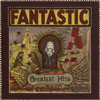 This album is a true oddity even by outsider music, vanity-pressstandards. Recorded and released in 1974 by Charlie Tweddle, a Kentuckynative and metaphysical haberdasher, the album encompassesintrospective Dylanesque folk, Appalachian music, psychedelia, fieldrecordings and radical tape experimentation. Tweddle was an art-schooldropout and an ex-member of Kansas City garage band The Prophets ofParadise when he decided to embark on a three-year lysergic tourthrough Haight-Ashbury. When he returned, his head still full of acid,he became convinced that he was a real life prophet with the mission ofbringing his peculiar brand of primitive hillbilly concrete psych tothe world. And so he got together with six guys that look like extrasfrom The Texas Chainsaw Massacre and recorded an LP combining hisoff-kilter songwriting with sudden, frightening excursions intoalarmingly atmospheric tape music. He dubbed the prophet part ofhimself Eilrahc Elddewt (Charlie Tweddle backwards) and wrote someastoundingly boastful liner notes: "Eilrahc is to music what Christ isto religion. This album will reach into the dustbins of your mind." Thealbum definitely reaches into something, but it's not my mind, it's adeep toybox of warped, drug-addled insanity. The opening track soundsinnocuous enough, a low-fidelity recording of a Dylan-influenced folksong, but soon there are strange things afoot: odd time signatures,strange tape effects, weird percussion. The second track, which I willcall "Hot Tamales" (all eight tracks are untitled), takes a jauntyTex-Mex tune and distorts it with sudden launches of time-compressedmariachi music. On track four, Tweddle and his pals perform aprimitive, ramshackle rendition of the gospel standard "This World IsNot My Home" (Incredible String Fans take note), adding a soundtrack ofchirping crickets to the background. Tweddle's obsession with UFOsreaches a nightmarish zenith on track six, which distorts fieldrecordings of seagulls into a menacing alien noise, while Tweddlenarrates his close encounter story: "In the darkness of the night, alight came dropping from above...The ship was landing on the shore/Andcoming from the ship...three creatures pointed to the sea...as youenter from beneath the ship, the figures follow you/It was a night oflove/You stood gazing into the eyes of your future/As the sea sang thesong with no words." The lysergic vocal mutations are dizzying, andadding to the confusion, Tweddle's narration competes with a recordingof himself playing "Blue Bonnet Lane." I figured that was about asstrange as this album could get, until I reached track eight, which isa 22-minute field recording of crickets chirping on a still, peacefulcountry night, as music plays in a far distant background. It's anabsolutely haunting end to one of the most idiosyncratic non-Jandekworks of outsider music I've ever heard. Companion Records does a greatjob with reissuing a record that was previously only available to themost diligent flea market crate diggers, adding six bonus tracks ofequally inventive music by Tweddle and retaining the original design ofthe packaging. Just when I think it's safe to be completely jaded anddisillusioned by the glut of over-hyped reissues of vinyl artifacts,along comes an album like Fantastic Greatest Hits, forcing me to wonder what other bits of unhinged genius might be hiding out there in history's dustbin.
This album is a true oddity even by outsider music, vanity-pressstandards. Recorded and released in 1974 by Charlie Tweddle, a Kentuckynative and metaphysical haberdasher, the album encompassesintrospective Dylanesque folk, Appalachian music, psychedelia, fieldrecordings and radical tape experimentation. Tweddle was an art-schooldropout and an ex-member of Kansas City garage band The Prophets ofParadise when he decided to embark on a three-year lysergic tourthrough Haight-Ashbury. When he returned, his head still full of acid,he became convinced that he was a real life prophet with the mission ofbringing his peculiar brand of primitive hillbilly concrete psych tothe world. And so he got together with six guys that look like extrasfrom The Texas Chainsaw Massacre and recorded an LP combining hisoff-kilter songwriting with sudden, frightening excursions intoalarmingly atmospheric tape music. He dubbed the prophet part ofhimself Eilrahc Elddewt (Charlie Tweddle backwards) and wrote someastoundingly boastful liner notes: "Eilrahc is to music what Christ isto religion. This album will reach into the dustbins of your mind." Thealbum definitely reaches into something, but it's not my mind, it's adeep toybox of warped, drug-addled insanity. The opening track soundsinnocuous enough, a low-fidelity recording of a Dylan-influenced folksong, but soon there are strange things afoot: odd time signatures,strange tape effects, weird percussion. The second track, which I willcall "Hot Tamales" (all eight tracks are untitled), takes a jauntyTex-Mex tune and distorts it with sudden launches of time-compressedmariachi music. On track four, Tweddle and his pals perform aprimitive, ramshackle rendition of the gospel standard "This World IsNot My Home" (Incredible String Fans take note), adding a soundtrack ofchirping crickets to the background. Tweddle's obsession with UFOsreaches a nightmarish zenith on track six, which distorts fieldrecordings of seagulls into a menacing alien noise, while Tweddlenarrates his close encounter story: "In the darkness of the night, alight came dropping from above...The ship was landing on the shore/Andcoming from the ship...three creatures pointed to the sea...as youenter from beneath the ship, the figures follow you/It was a night oflove/You stood gazing into the eyes of your future/As the sea sang thesong with no words." The lysergic vocal mutations are dizzying, andadding to the confusion, Tweddle's narration competes with a recordingof himself playing "Blue Bonnet Lane." I figured that was about asstrange as this album could get, until I reached track eight, which isa 22-minute field recording of crickets chirping on a still, peacefulcountry night, as music plays in a far distant background. It's anabsolutely haunting end to one of the most idiosyncratic non-Jandekworks of outsider music I've ever heard. Companion Records does a greatjob with reissuing a record that was previously only available to themost diligent flea market crate diggers, adding six bonus tracks ofequally inventive music by Tweddle and retaining the original design ofthe packaging. Just when I think it's safe to be completely jaded anddisillusioned by the glut of over-hyped reissues of vinyl artifacts,along comes an album like Fantastic Greatest Hits, forcing me to wonder what other bits of unhinged genius might be hiding out there in history's dustbin.
samples:
LTM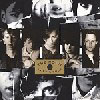 The Room thrived in the late 1980s and embraced a variety of sounds:British new wave, jangle pop, alt-pop, and others. One of the hallmarksof the original In Evil HourLP was that it was originally produced by Tom Verlaine but this onlyprovides a minor understanding of the disparate sounds contained. Theopener, "A Shirt Of Fire," sparks the album with a panoply of layeredand melodic guitar lines and breathy vocals. The chorus of the songconcludes each time with an utterly compelling tempo change,transitioning from a brisk sprint to a deliberate and contemplativewaltz, guitars all the while mimicking the pace. After the downshift,the song then collects itself back into the original tempo with anascending wall of frantically-strummed guitar. "A Shirt Of Fire"instantly recalls bands like Echo and the Bunnymen and The Chameleons.The similarities persist throughout the album, as well. Signaturebreathy vocals, the angularity of the guitars, and imploring lyrics areall distinctly Echoey and Bunnyish at the same time. Perhaps thepremier song on this collection is the tingly "New Dreams For Old." Thesong is prudently represented twice, once as the original album cut andthen as a version featuring horns from a 7-inch release. Both times, itis impossible to deny the brilliance of the song. The first 20 secondsare enough to turn heads: a shimmery guitar intro is swept up by anorgan almost too soon and sure enough everything else thereafter fallsinto place. The rest is pure Brit-pop, reminiscent of Britain's finestlabels who peddled such sounds: Sarah, Creation, 53rd + 3rd, Subway. Onthe contrary, the worst moments come when The Room acquiesce to atemptation which corrupted many of their Brit-pop contemporaries. Theintroduction of lounge music into indie Brit-pop was a truly abhorrentdevelopment which cauterized some unlucky alt-pop bands, largelyBritish, in the late 1980s and early 1990s—and it wasn't just Brit-popwhich suffered under this detestable hybridization. By the mid 1990s,trip-hop, acid jazz, and a host of other musical subgenres popped upwhich had lounge music as their root evil. Even hermetic hip-hop had aperhaps less noxious flirtation with lounge, seen in bands like DigablePlanets. Along those same lines, The Room were not savvy enough toresist the urge of lounge music in some of their compositions. Songslike "Numb" and "Never" are Bossa Novean belchings which sound likesomething Getz and Gilberto might have coughed up in their bettermoments. It could be that The Room were merely partaking in thatuniversal pastime to which all bands are eventually drawn, what mostwill call "growing as a band and maturing musically." Generally, thisis just obfuscation for an unfortunate divergence from a well-honedsound in favor of a less-palateable direction. Such is the case here.Thankfully, the lounginess tends to pop up only in the later material,songs which were taken from the Clear! EP. Intermingled withthese rather disappointing cuts are crisper songs which areunassailably new wave ("The Ride," for instance) and have a much easiertime meshing with the overall sound of The Room. In the end, the powerof the jangle and synthesizers is largely able to dissipate all that issmoky, jazzy, and upholstered with plush red velvet from The Room.
The Room thrived in the late 1980s and embraced a variety of sounds:British new wave, jangle pop, alt-pop, and others. One of the hallmarksof the original In Evil HourLP was that it was originally produced by Tom Verlaine but this onlyprovides a minor understanding of the disparate sounds contained. Theopener, "A Shirt Of Fire," sparks the album with a panoply of layeredand melodic guitar lines and breathy vocals. The chorus of the songconcludes each time with an utterly compelling tempo change,transitioning from a brisk sprint to a deliberate and contemplativewaltz, guitars all the while mimicking the pace. After the downshift,the song then collects itself back into the original tempo with anascending wall of frantically-strummed guitar. "A Shirt Of Fire"instantly recalls bands like Echo and the Bunnymen and The Chameleons.The similarities persist throughout the album, as well. Signaturebreathy vocals, the angularity of the guitars, and imploring lyrics areall distinctly Echoey and Bunnyish at the same time. Perhaps thepremier song on this collection is the tingly "New Dreams For Old." Thesong is prudently represented twice, once as the original album cut andthen as a version featuring horns from a 7-inch release. Both times, itis impossible to deny the brilliance of the song. The first 20 secondsare enough to turn heads: a shimmery guitar intro is swept up by anorgan almost too soon and sure enough everything else thereafter fallsinto place. The rest is pure Brit-pop, reminiscent of Britain's finestlabels who peddled such sounds: Sarah, Creation, 53rd + 3rd, Subway. Onthe contrary, the worst moments come when The Room acquiesce to atemptation which corrupted many of their Brit-pop contemporaries. Theintroduction of lounge music into indie Brit-pop was a truly abhorrentdevelopment which cauterized some unlucky alt-pop bands, largelyBritish, in the late 1980s and early 1990s—and it wasn't just Brit-popwhich suffered under this detestable hybridization. By the mid 1990s,trip-hop, acid jazz, and a host of other musical subgenres popped upwhich had lounge music as their root evil. Even hermetic hip-hop had aperhaps less noxious flirtation with lounge, seen in bands like DigablePlanets. Along those same lines, The Room were not savvy enough toresist the urge of lounge music in some of their compositions. Songslike "Numb" and "Never" are Bossa Novean belchings which sound likesomething Getz and Gilberto might have coughed up in their bettermoments. It could be that The Room were merely partaking in thatuniversal pastime to which all bands are eventually drawn, what mostwill call "growing as a band and maturing musically." Generally, thisis just obfuscation for an unfortunate divergence from a well-honedsound in favor of a less-palateable direction. Such is the case here.Thankfully, the lounginess tends to pop up only in the later material,songs which were taken from the Clear! EP. Intermingled withthese rather disappointing cuts are crisper songs which areunassailably new wave ("The Ride," for instance) and have a much easiertime meshing with the overall sound of The Room. In the end, the powerof the jangle and synthesizers is largely able to dissipate all that issmoky, jazzy, and upholstered with plush red velvet from The Room.
samples:
Ze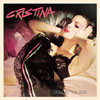 As part of Ze Records' ongoing excavation of their extensive backcatalog, they have recently reissued two albums by Cristina, theinternationally ignored disco superstar should-have-been but never-was.Cristina Monet was born into opulence and wealth, attending Harvard andLondon's School of Drama, floating freely between flats in London,Paris and New York City. In 1978, while working at a theater critic forthe Village Voice,she met her future husband and founder of Ze Records Michael Zelkha.Zelkha was itching to get into the NYC underground punk/disco scenes,so they recorded a single called "Disco Clone," an incisive, ifirritating satire of disco culture for which they enlisted theproduction talents of John Cale and hilariously corny vocal narrationby actor Kevin Kline. Thankfully, the music improved by leaps andbounds by the time Cristina was recording her debut full-length Doll in the Box,but "Disco Clone" pretty much established Cristina's modus operandi:sleek, downtown Studio 54 jams with Cristina's haughty, detached,Brechtian vocal style; demonstrating her cool disillusionment withnightclubs full of "bored-looking bankers dancing with beautifulmodels." That early single is included as a bonus track on thisreissue, along with some other early singles and the entire AugustDarnell-produced debut. Darnell was soon to unveil his Latino-flavoredmutant disco ensemble Kid Creole and the Coconuts, and much of thatinfluence is evident on Doll in a Box, with heavy-handedAfrican and Latin rhythms, Caribbean overtones and a jaunty brasssection. Check out the African tribal chanting that forms the basis of"Jungle Love" for a laugh. Listening to this material more than 20years later, it can't help but sound somewhat dated, suffering fromaging problems that Cristina's contemporaries (and labelmates) such asWas (Not Was) and the Aural Exciters were able to sidestep. Most ofCristina's appeal lay in her sarcastic, world-weary vocals, soundingyears beyond her actual age. However, for much of Doll in the Box,those amazing vocals are overwhelmed with an overactive, technicolorproduction that wears a thin after a few listens. The singles are muchbetter, with the aforementioned "Disco Clone" presented alongsidehilariously witty covers of Peggy Lee's Lieber and Stoller-penned "IsThat All There Is?" and The Beatles "Drive My Car." On the latter,Cristina alters the lyrics of the Lee classic into a darkly humorousmonologue set against incongruously bubbly music: "And then I fell inlove with the most wonderful boy in Manhattan...we'd take longs walksdown by the river and he'd beat me black and blue and I loved it." Doll in a Boxis very far from a lost classic, but the inclusion of Cristina'sclassic early 12" singles more than makes up for its shortcomings.
As part of Ze Records' ongoing excavation of their extensive backcatalog, they have recently reissued two albums by Cristina, theinternationally ignored disco superstar should-have-been but never-was.Cristina Monet was born into opulence and wealth, attending Harvard andLondon's School of Drama, floating freely between flats in London,Paris and New York City. In 1978, while working at a theater critic forthe Village Voice,she met her future husband and founder of Ze Records Michael Zelkha.Zelkha was itching to get into the NYC underground punk/disco scenes,so they recorded a single called "Disco Clone," an incisive, ifirritating satire of disco culture for which they enlisted theproduction talents of John Cale and hilariously corny vocal narrationby actor Kevin Kline. Thankfully, the music improved by leaps andbounds by the time Cristina was recording her debut full-length Doll in the Box,but "Disco Clone" pretty much established Cristina's modus operandi:sleek, downtown Studio 54 jams with Cristina's haughty, detached,Brechtian vocal style; demonstrating her cool disillusionment withnightclubs full of "bored-looking bankers dancing with beautifulmodels." That early single is included as a bonus track on thisreissue, along with some other early singles and the entire AugustDarnell-produced debut. Darnell was soon to unveil his Latino-flavoredmutant disco ensemble Kid Creole and the Coconuts, and much of thatinfluence is evident on Doll in a Box, with heavy-handedAfrican and Latin rhythms, Caribbean overtones and a jaunty brasssection. Check out the African tribal chanting that forms the basis of"Jungle Love" for a laugh. Listening to this material more than 20years later, it can't help but sound somewhat dated, suffering fromaging problems that Cristina's contemporaries (and labelmates) such asWas (Not Was) and the Aural Exciters were able to sidestep. Most ofCristina's appeal lay in her sarcastic, world-weary vocals, soundingyears beyond her actual age. However, for much of Doll in the Box,those amazing vocals are overwhelmed with an overactive, technicolorproduction that wears a thin after a few listens. The singles are muchbetter, with the aforementioned "Disco Clone" presented alongsidehilariously witty covers of Peggy Lee's Lieber and Stoller-penned "IsThat All There Is?" and The Beatles "Drive My Car." On the latter,Cristina alters the lyrics of the Lee classic into a darkly humorousmonologue set against incongruously bubbly music: "And then I fell inlove with the most wonderful boy in Manhattan...we'd take longs walksdown by the river and he'd beat me black and blue and I loved it." Doll in a Boxis very far from a lost classic, but the inclusion of Cristina'sclassic early 12" singles more than makes up for its shortcomings.
samples:
Ze For her 1984 follow-up, Cristina enlisted the production genius of DonWas, who brings to Cristina's vocals a musical backdrop every bit asbizarre and infectious as his own Ze Records project Was (Not Was).Forgoing the extended disco excursions of her debut, Cristina and Wasinstead created ten radio-ready pop songs, trying to outdo Madonna ather own game, perhaps. Along with originals penned by the singerherself in conjunction with Was, Doug Fieger (of The Kinks) and RobertPalmer (!), Cristina also performs distinctive covers of songs by VanMorrison, Prince and obscure country singer John Conlee. The albumfeatures excellent guest contributions from contorted punk saxophonistJames Chance and jazz legend Marcus Belgrave. With all this star power,I partially expected Sleep It Offto sound like smooth, competent 1980s new wave pop. Well, it doesn'tsound like that at all, but what it does sound like is harder to naildown. Producer Was adds stacks of keyboards and synthesizers, wackyloops and sound effects, creating a densely populated architecture ofsound that at times threatens to steal the show from Cristina's vocals.Perhaps in order to cement the Brecht comparison, Cristina andcollaborator Ben Brierly perform a gothic-y cover of Bertolt Brecht andKurt Weil's classic ode to purchased love "Ballad of Immoral Earnings."With some of the tracks recalling the sophisticated disco of her earlysingles, and some taking utterly bizarre tangents into electro-Country("She Can't Say That Anymore") and cheesy 1980s pop balladry ("The Lieof Love"), the overall effect of Sleep It Off is pureeclecticism. As such, it never becomes boring, although it does lack acertain focus, which probably explains the public's indifference to thealbum at the time of its release. The lack of any obvious single normalenough for radio airplay probably also contributed. "Don't Mutilate MyMink" gleefully rips off the Sex Pistols' "Anarchy in the UK," for oneof the album's funniest, most confrontational tracks. Bonus tracksinclude horrible session outtakes, a bizarre Christmas song, and areally nifty cover of Prince's classic "When You Were Mine." Sleep It Offis an interesting mess, one I don't think I'll be returning to any timesoon, but that I am nonetheless glad has received the deluxe reissuetreatment from Ze.
For her 1984 follow-up, Cristina enlisted the production genius of DonWas, who brings to Cristina's vocals a musical backdrop every bit asbizarre and infectious as his own Ze Records project Was (Not Was).Forgoing the extended disco excursions of her debut, Cristina and Wasinstead created ten radio-ready pop songs, trying to outdo Madonna ather own game, perhaps. Along with originals penned by the singerherself in conjunction with Was, Doug Fieger (of The Kinks) and RobertPalmer (!), Cristina also performs distinctive covers of songs by VanMorrison, Prince and obscure country singer John Conlee. The albumfeatures excellent guest contributions from contorted punk saxophonistJames Chance and jazz legend Marcus Belgrave. With all this star power,I partially expected Sleep It Offto sound like smooth, competent 1980s new wave pop. Well, it doesn'tsound like that at all, but what it does sound like is harder to naildown. Producer Was adds stacks of keyboards and synthesizers, wackyloops and sound effects, creating a densely populated architecture ofsound that at times threatens to steal the show from Cristina's vocals.Perhaps in order to cement the Brecht comparison, Cristina andcollaborator Ben Brierly perform a gothic-y cover of Bertolt Brecht andKurt Weil's classic ode to purchased love "Ballad of Immoral Earnings."With some of the tracks recalling the sophisticated disco of her earlysingles, and some taking utterly bizarre tangents into electro-Country("She Can't Say That Anymore") and cheesy 1980s pop balladry ("The Lieof Love"), the overall effect of Sleep It Off is pureeclecticism. As such, it never becomes boring, although it does lack acertain focus, which probably explains the public's indifference to thealbum at the time of its release. The lack of any obvious single normalenough for radio airplay probably also contributed. "Don't Mutilate MyMink" gleefully rips off the Sex Pistols' "Anarchy in the UK," for oneof the album's funniest, most confrontational tracks. Bonus tracksinclude horrible session outtakes, a bizarre Christmas song, and areally nifty cover of Prince's classic "When You Were Mine." Sleep It Offis an interesting mess, one I don't think I'll be returning to any timesoon, but that I am nonetheless glad has received the deluxe reissuetreatment from Ze.
samples:



